Striking a Balance
- Details
 In the face of relentless pressure on local authority budgets, heads of legal services are required to contribute savings to balance the budget, whilst at the same time being expected to provide advice on increasingly complex and often unfamiliar legal matters.
In the face of relentless pressure on local authority budgets, heads of legal services are required to contribute savings to balance the budget, whilst at the same time being expected to provide advice on increasingly complex and often unfamiliar legal matters.
As councils take on challenges such as commercialisation to increase income, heads of legal services will need to ensure that their authorities have access to first class legal advice, at an affordable cost. In most authorities, this will require using a mix of the in-house team, and external lawyers.
Getting that mix right is the key to providing effective legal services. Unfortunately, there is no “silver bullet”, and no two authorities will find that the same mix works equally well for them. This means that every head of legal services will have to consider the issue for themselves, and make decisions that suit their authority, working within any constraints that might restrict that choice. Nonetheless, there are techniques that can be used, which make the exercise less daunting than it might otherwise be.
The starting point should always be trying to understand what legal needs an authority has. This may seem obvious, but it must be remembered that “need” is very different from “nice to have”, and as budgets come under increasing pressure, any service that falls into the latter category needs to be uncovered.
That is not to say that some services which are nice to have, rather than essential, could immediately stop, there may be all sorts of reasons why that is not possible, not least the political priorities of councilors. However, if anything is to be provided because it is “nice to have” rather than an absolute need, this should be a conscious decision, rather than a historical accident.
Understanding the authority’s legal requirements
Understanding the authority’s legal requirements requires the legal team to engage with its stakeholders to understand their requirements, preferences, and constraints, whether budgetary or otherwise. It is useful to carry out a survey of instructing departments to find out about their expected workload or projects for the following year, and in the medium term if possible, to understand the impact that this might have on their need for legal services.
The requirement should be defined at an authority and departmental level, and heads of legal should not be afraid to challenge client departments, because it is not uncommon for departments to respond to reduced capacity in their own teams by referring more work to legal services. This may be appropriate, but it may be more effective at corporate level to increase capacity where it is needed, rather than increase legal expenditure. There should also be a sense check at corporate management team level, to ensure that the authority as a whole is prepared to endorse the legal need established by each individual department.
Properly understanding the need that the legal department is expected to meet can be a complex and time consuming task, but one which is worth the investment of time as it is the starting point to becoming more efficient. As part of this exercise it is worth seeking views as to how the client departments consider the needs might best be met, so that their opinions can be taken into account.
There may be particular projects or areas of work where they have a firm view about whether they would like support from the in-house team, or prefer external legal advice. That is not to say that this view should necessarily be the deciding factor, but it is certainly an element to consider.
Assess how the authority’s legal needs are currently being met
Having identified the need, the next task is to thoroughly understand whether the current service meets the established need, and what could be done differently. Again, the work involved in this should not be underestimated. If it feels too daunting to tackle the whole of legal services at once, or there is not the capacity to do so, benefits can still be gained from addressing one area of work, particularly one of high demand.
This stage requires a thorough analysis of the work-streams, and who is doing the work, breaking down what work is done internally, and by external suppliers, and in both cases understanding the levels of expertise used on the work. It is not uncommon to find that in an internal team, over time, work has defaulted to lawyers who may be more senior than is strictly required for the level of work. Resetting the levels of expertise and experience at which work is carried out can be a sensitive subject; some lawyers may be unwilling to leave their comfort zone to carry out more senior work with which they might be less experienced, or equally reluctant to allow certain types of work to be carried out at a more junior level.
Engaging the team in these discussions is crucial to ensure successful delivery, but heads of legal should not shirk from exercising leadership, and being firm about changes that are required to achieve efficiencies.
It is also necessary to drill down and thoroughly understand the cost of processes. This may be difficult to determine in practice, because in addition to the budget held by the in-house team, some departments may have additional direct legal spend which may be hard to identify, and accounting practices may make it difficult to extract third party costs from expenditure recorded as legal spend.
Identifying the cost should not only concentrate on the cost of the person carrying out a particular process, but all the peripheral costs such as a share of overheads, and even the lost opportunity of what else the person might be doing if they stopped that task – for example, could they be doing something else that might generate income for the authority?
Understanding the alternatives
After analysing how needs are being met, the second stage is to consider alternatives. Nothing should be ruled in or out at this stage.
Although there may be strong political or cultural reasons why a particular alternative might be unacceptable, it should still be considered (although not wasting too much time on detail if it is a non-starter) and the reasons why it is not acceptable will form part of the business case to support the recommended option.
There are many ways of providing an alternative to the current provision, including:
● Different structure to the internal team
● Different mix of work carried out by the internal legal team
● Different processes
● Technology
● Different arrangements for use of external legal suppliers, e.g. establish or access an existing framework arrangement
Shared services
As part of this exercise, it will be necessary to recommend growth, or reductions, in service. It could make sense to concentrate on growing areas where there is already strong expertise, and perhaps an ability to develop an income stream from that expertise. It could also make sense to grow an area of work where current expertise is limited or non-existent, but where it would be beneficial to the authority to have in-house provision to support that area of work.
Areas that might be worth reducing service are those which cost more to provide than they deliver in benefits, but care must be taken. For example, prosecutions for littering offences are a prime example of work which can cost more to provide than the authority recovers in fines and costs, but there may be a strong political desire to be firm on littering offences.
There are many factors that might influence which alternatives are attractive, or otherwise. The strengths and weaknesses of the internal team need to analysed, alongside an analysis of the state of the market, and the likelihood of being able to recruit to fill any gaps identified. If there is a recognised shortage of expertise in a particular area, and known difficulties recruiting to it, this might be a strong influence to source most of that work from external suppliers.
Capacity is also an issue, both in the in-house legal team, and client departments. If departments are stretched and struggle to instruct effectively, it might be a better option to leave that work in-house so that support can be given by in-house lawyers rather than incurring the cost of more expensive external lawyers.
In these circumstances the support needed may extend beyond what it would be usual for lawyers to provide, and the cost of obtaining this level of support externally could be prohibitive.
Of course, there may also be contractual obligations that influence the changes that can be made, for example if an authority is tied into a contract with a particular provider for a particular area of legal service, it could be difficult to make changes until that contract has expired. Likewise it might be necessary to set up new contractual arrangements to outsource large areas of work.
The culture of the organisation and its appetite for risk is also likely to be an influencing factor. If the authority is involved in high-profile, innovative projects, it may be appropriate for support to be provided by the in-house team, but it would require an honest assessment of whether the in-house team currently has the relevant skills to support that work.
It may do, or it may be prudent to outsource such work for a period of time with the express intention of upskilling internal lawyers working alongside the external lawyers on current projects, or recruiting to strengthen the team in the longer term.
The target operating model
Once the authority’s needs are understood, and the alternatives to the current position fully considered, it should be possible to determine a target operating model and potential revised structures, supported by a strong business case. It is unlikely that the target operating model could be achieved immediately. However, once the aim is established, a project timeline can be prepared, with targets set as to what could be achieved at various stages.
It is inevitable that any target operating model that changes the status quo will be time consuming and potentially complex. It will be necessary to gain the support of the in-house legal team, client departments and senior management, and ensure that they are fully on board with the aims.
This is a project, and like any other, will require careful project management to ensure that desired outcomes are met. If the business case supporting the target operating model is strong enough, the project is likely to be worth pursuing despite any hurdles encountered.
However an authority currently balances the work between its in-house team and external suppliers, it is worth reviewing the arrangements, and continuing to carry out periodic reviews. Local government is a rapidly changing environment, and what was once the best mix of internal and external suppliers in unlikely to remain so indefinitely.
Helen Edwards is client services director at Kennedy Cater Legal.

This article was first published in the July edition of Local Government Lawyer Insight, which can be accessed at http://www.localgovernmentlawyer.co.uk/insight Insight is published four times a year and is circulated free-of-charge to all Local Government Lawyer newsletter subscribers (click here to subscribe) in electronic format. A single hard copy is also circulated to all local authority legal departments in England and Wales. Additional printed copies are available for just £49.95 for four issues. Multiple copies are also available at £149.95 for five or £249.95 for 10. Payment can be made by purchase order/invoice or by credit/debit card. To order, please call 0207 239 4917 or email |
 In the face of relentless pressure on local authority budgets, heads of legal services are required to contribute savings to balance the budget, whilst at the same time being expected to provide advice on increasingly complex and often unfamiliar legal matters.
In the face of relentless pressure on local authority budgets, heads of legal services are required to contribute savings to balance the budget, whilst at the same time being expected to provide advice on increasingly complex and often unfamiliar legal matters.
As councils take on challenges such as commercialisation to increase income, heads of legal services will need to ensure that their authorities have access to first class legal advice, at an affordable cost. In most authorities, this will require using a mix of the in-house team, and external lawyers.
Getting that mix right is the key to providing effective legal services. Unfortunately, there is no “silver bullet”, and no two authorities will find that the same mix works equally well for them. This means that every head of legal services will have to consider the issue for themselves, and make decisions that suit their authority, working within any constraints that might restrict that choice. Nonetheless, there are techniques that can be used, which make the exercise less daunting than it might otherwise be.
The starting point should always be trying to understand what legal needs an authority has. This may seem obvious, but it must be remembered that “need” is very different from “nice to have”, and as budgets come under increasing pressure, any service that falls into the latter category needs to be uncovered.
That is not to say that some services which are nice to have, rather than essential, could immediately stop, there may be all sorts of reasons why that is not possible, not least the political priorities of councilors. However, if anything is to be provided because it is “nice to have” rather than an absolute need, this should be a conscious decision, rather than a historical accident.
Understanding the authority’s legal requirements
Understanding the authority’s legal requirements requires the legal team to engage with its stakeholders to understand their requirements, preferences, and constraints, whether budgetary or otherwise. It is useful to carry out a survey of instructing departments to find out about their expected workload or projects for the following year, and in the medium term if possible, to understand the impact that this might have on their need for legal services.
The requirement should be defined at an authority and departmental level, and heads of legal should not be afraid to challenge client departments, because it is not uncommon for departments to respond to reduced capacity in their own teams by referring more work to legal services. This may be appropriate, but it may be more effective at corporate level to increase capacity where it is needed, rather than increase legal expenditure. There should also be a sense check at corporate management team level, to ensure that the authority as a whole is prepared to endorse the legal need established by each individual department.
Properly understanding the need that the legal department is expected to meet can be a complex and time consuming task, but one which is worth the investment of time as it is the starting point to becoming more efficient. As part of this exercise it is worth seeking views as to how the client departments consider the needs might best be met, so that their opinions can be taken into account.
There may be particular projects or areas of work where they have a firm view about whether they would like support from the in-house team, or prefer external legal advice. That is not to say that this view should necessarily be the deciding factor, but it is certainly an element to consider.
Assess how the authority’s legal needs are currently being met
Having identified the need, the next task is to thoroughly understand whether the current service meets the established need, and what could be done differently. Again, the work involved in this should not be underestimated. If it feels too daunting to tackle the whole of legal services at once, or there is not the capacity to do so, benefits can still be gained from addressing one area of work, particularly one of high demand.
This stage requires a thorough analysis of the work-streams, and who is doing the work, breaking down what work is done internally, and by external suppliers, and in both cases understanding the levels of expertise used on the work. It is not uncommon to find that in an internal team, over time, work has defaulted to lawyers who may be more senior than is strictly required for the level of work. Resetting the levels of expertise and experience at which work is carried out can be a sensitive subject; some lawyers may be unwilling to leave their comfort zone to carry out more senior work with which they might be less experienced, or equally reluctant to allow certain types of work to be carried out at a more junior level.
Engaging the team in these discussions is crucial to ensure successful delivery, but heads of legal should not shirk from exercising leadership, and being firm about changes that are required to achieve efficiencies.
It is also necessary to drill down and thoroughly understand the cost of processes. This may be difficult to determine in practice, because in addition to the budget held by the in-house team, some departments may have additional direct legal spend which may be hard to identify, and accounting practices may make it difficult to extract third party costs from expenditure recorded as legal spend.
Identifying the cost should not only concentrate on the cost of the person carrying out a particular process, but all the peripheral costs such as a share of overheads, and even the lost opportunity of what else the person might be doing if they stopped that task – for example, could they be doing something else that might generate income for the authority?
Understanding the alternatives
After analysing how needs are being met, the second stage is to consider alternatives. Nothing should be ruled in or out at this stage.
Although there may be strong political or cultural reasons why a particular alternative might be unacceptable, it should still be considered (although not wasting too much time on detail if it is a non-starter) and the reasons why it is not acceptable will form part of the business case to support the recommended option.
There are many ways of providing an alternative to the current provision, including:
● Different structure to the internal team
● Different mix of work carried out by the internal legal team
● Different processes
● Technology
● Different arrangements for use of external legal suppliers, e.g. establish or access an existing framework arrangement
Shared services
As part of this exercise, it will be necessary to recommend growth, or reductions, in service. It could make sense to concentrate on growing areas where there is already strong expertise, and perhaps an ability to develop an income stream from that expertise. It could also make sense to grow an area of work where current expertise is limited or non-existent, but where it would be beneficial to the authority to have in-house provision to support that area of work.
Areas that might be worth reducing service are those which cost more to provide than they deliver in benefits, but care must be taken. For example, prosecutions for littering offences are a prime example of work which can cost more to provide than the authority recovers in fines and costs, but there may be a strong political desire to be firm on littering offences.
There are many factors that might influence which alternatives are attractive, or otherwise. The strengths and weaknesses of the internal team need to analysed, alongside an analysis of the state of the market, and the likelihood of being able to recruit to fill any gaps identified. If there is a recognised shortage of expertise in a particular area, and known difficulties recruiting to it, this might be a strong influence to source most of that work from external suppliers.
Capacity is also an issue, both in the in-house legal team, and client departments. If departments are stretched and struggle to instruct effectively, it might be a better option to leave that work in-house so that support can be given by in-house lawyers rather than incurring the cost of more expensive external lawyers.
In these circumstances the support needed may extend beyond what it would be usual for lawyers to provide, and the cost of obtaining this level of support externally could be prohibitive.
Of course, there may also be contractual obligations that influence the changes that can be made, for example if an authority is tied into a contract with a particular provider for a particular area of legal service, it could be difficult to make changes until that contract has expired. Likewise it might be necessary to set up new contractual arrangements to outsource large areas of work.
The culture of the organisation and its appetite for risk is also likely to be an influencing factor. If the authority is involved in high-profile, innovative projects, it may be appropriate for support to be provided by the in-house team, but it would require an honest assessment of whether the in-house team currently has the relevant skills to support that work.
It may do, or it may be prudent to outsource such work for a period of time with the express intention of upskilling internal lawyers working alongside the external lawyers on current projects, or recruiting to strengthen the team in the longer term.
The target operating model
Once the authority’s needs are understood, and the alternatives to the current position fully considered, it should be possible to determine a target operating model and potential revised structures, supported by a strong business case. It is unlikely that the target operating model could be achieved immediately. However, once the aim is established, a project timeline can be prepared, with targets set as to what could be achieved at various stages.
It is inevitable that any target operating model that changes the status quo will be time consuming and potentially complex. It will be necessary to gain the support of the in-house legal team, client departments and senior management, and ensure that they are fully on board with the aims.
This is a project, and like any other, will require careful project management to ensure that desired outcomes are met. If the business case supporting the target operating model is strong enough, the project is likely to be worth pursuing despite any hurdles encountered.
However an authority currently balances the work between its in-house team and external suppliers, it is worth reviewing the arrangements, and continuing to carry out periodic reviews. Local government is a rapidly changing environment, and what was once the best mix of internal and external suppliers in unlikely to remain so indefinitely.
Helen Edwards is client services director at Kennedy Cater Legal.

This article was first published in the July edition of Local Government Lawyer Insight, which can be accessed at http://www.localgovernmentlawyer.co.uk/insight Insight is published four times a year and is circulated free-of-charge to all Local Government Lawyer newsletter subscribers (click here to subscribe) in electronic format. A single hard copy is also circulated to all local authority legal departments in England and Wales. Additional printed copies are available for just £49.95 for four issues. Multiple copies are also available at £149.95 for five or £249.95 for 10. Payment can be made by purchase order/invoice or by credit/debit card. To order, please call 0207 239 4917 or email |
Governance Lawyer
Solicitor/Lawyer (Contracts and Procurement)
Contracts Lawyer
Solicitor - Litigation
Lawyer (Planning and Regulatory)
Legal Director - Government and Public Sector
Legal Adviser
Deputy Director Legal and Democratic Services
Regulatory/Litigation Lawyer
Antisocial Behaviour Legal Officer
Locum roles
 Masterclass – MCA and Court of Protection - Legal Update - Peter Edwards Law Training
Masterclass – MCA and Court of Protection - Legal Update - Peter Edwards Law Training
21-01-2026
Online (live)
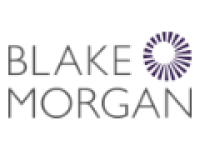 Managing settlements: the legal and practical issues, and the pitfalls to avoid - Blake Morgan
Managing settlements: the legal and practical issues, and the pitfalls to avoid - Blake Morgan
22-01-2026 10:00 am
Online (live)
 Children and Young People (DoL, Competency and Capacity) - Peter Edwards Law Training
Children and Young People (DoL, Competency and Capacity) - Peter Edwards Law Training
28-01-2026
Online (live)
 HMPL Building Blocks: Legal Tools to Combat Anti-Social Behaviour - Devonshires
HMPL Building Blocks: Legal Tools to Combat Anti-Social Behaviour - Devonshires
17-02-2026
Online (live)
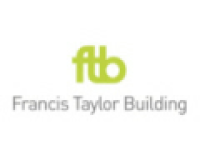 Freedom of thought, belief and religion: Article 9 ECHR - Francis Taylor Building
Freedom of thought, belief and religion: Article 9 ECHR - Francis Taylor Building
19-02-2026
Online (live)
 Grappling with S73 - variations of conditions applications or appeals - Ivy Legal
Grappling with S73 - variations of conditions applications or appeals - Ivy Legal
09-03-2026
Online (live)
 HMPL Building Blocks: Tenancy Management – Assignment, Mutual Exchange and Succession - Devonshires
HMPL Building Blocks: Tenancy Management – Assignment, Mutual Exchange and Succession - Devonshires
12-03-2026
Online (live)
 Section 31(2A) Senior Courts Act: where have we got to? - Francis Taylor Building
Section 31(2A) Senior Courts Act: where have we got to? - Francis Taylor Building
18-03-2026 1:00 pm
Online (live)
 Save the Date: The Law of Public Rights of Way, Commons and Town or Village Greens Seminar (Hybrid) - Francis Taylor Building
Save the Date: The Law of Public Rights of Way, Commons and Town or Village Greens Seminar (Hybrid) - Francis Taylor Building
25-03-2026
London
 HMPL Building Blocks: A Housing Officer’s Guide to Court Proceedings - Devonshires
HMPL Building Blocks: A Housing Officer’s Guide to Court Proceedings - Devonshires
14-04-2026
Online (live)
















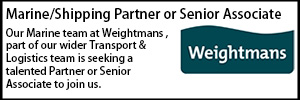





















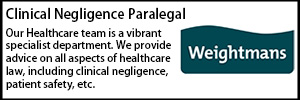










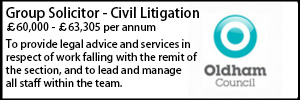


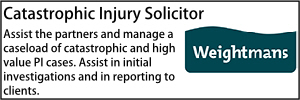

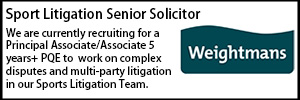


























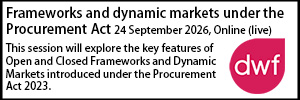







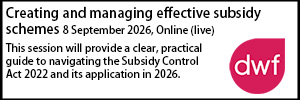

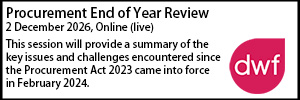



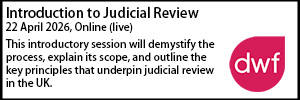
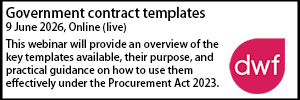

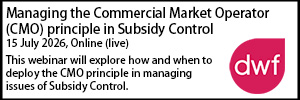



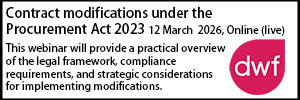







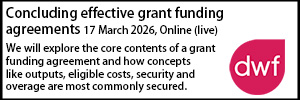




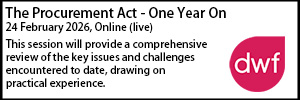

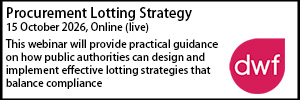



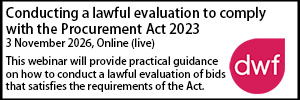


 First Aid Level 3 - LBL Skills
First Aid Level 3 - LBL Skills  Capsticks Housing Diploma
Capsticks Housing Diploma  Standish 18 months on - 42BR
Standish 18 months on - 42BR  Accelerating EV Charging Infrastructure in the Public Sector - DWF
Accelerating EV Charging Infrastructure in the Public Sector - DWF  Building Safety Act Conference 2026 - Landmark Chambers
Building Safety Act Conference 2026 - Landmark Chambers  Education Law Conference - 3PB
Education Law Conference - 3PB 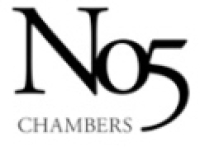 Annual Planning Seminar 2026 - No.5 Barristers
Annual Planning Seminar 2026 - No.5 Barristers 